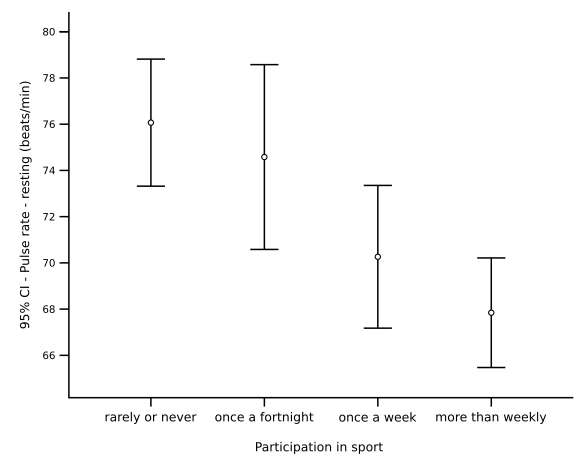OCR Specification focus:
‘Evaluate experimental results and draw reasoned conclusions supported by the evidence collected.’
Evaluating results and drawing conclusions strengthens scientific investigations, ensuring that data are interpreted logically, trends are justified, and conclusions relate reliably to biological principles and experimental evidence.
Evaluating Results
When evaluating results, students must judge the quality of data, identify patterns, consider supporting or conflicting evidence, and link outcomes to the original aim of the investigation. The goal is to determine whether the data are trustworthy and whether they provide a strong basis for drawing conclusions.
Data Quality and Reliability
Reliable results are consistent and repeatable. The term reliability means the degree to which repeated measurements under unchanged conditions produce similar results.
Reliability: The consistency of measurements when repeated under the same conditions.
High reliability is usually indicated by a narrow range of repeated values and reduced spread around the mean.
Judging reliability involves commenting on:
Number of repeats: more repeats increase confidence
Scatter of data: small scatter suggests reliable trends
Identification of anomalies: values that deviate markedly from a trend
Accuracy and Validity
Accuracy refers to how close a measurement is to the true value.

Target diagrams contrasting high and low accuracy with high and low precision, illustrating how data may be consistent, close to the true value, both, or neither. Source.
Validity refers to whether the experiment measures what it claims to investigate.
Validity: The extent to which the method used allows the experiment to test the stated hypothesis.
Validity is improved by controlling key variables and selecting appropriate apparatus to reduce systematic error. Even reliable data may be invalid if the design does not match the scientific question.
Between these ideas, accuracy, reliability and validity must all be considered when evaluating experimental results. Students should comment explicitly on how each factor affects confidence in the outcome.
Identifying Trends and Patterns
Evaluating results requires careful interpretation of data trends and comparison to biological principles. Students should:
Describe patterns shown in processed data, including increases, decreases or correlations
Refer to specific data such as comparative values or rate changes
Avoid vague language, making clear reference to the graph or table
Distinguish correlation from cause, linking only justified biological mechanisms to observed changes
Linking Evidence to Conclusions
A conclusion must directly answer the original aim or hypothesis, supported by the collected evidence. A strong conclusion will:
State the main finding clearly
Use processed data to justify statements
Link trends to biological knowledge
Avoid unsupported assumptions or speculation
A hypothesis is a predictive statement that can be tested.
Hypothesis: A testable statement predicting a relationship between variables based on scientific reasoning.
A reasoned conclusion should confirm, reject or partially support the hypothesis, making clear why the evidence leads to that judgement.
Discussing Confidence in the Conclusion
To evaluate how much confidence can be placed in a conclusion, students must critique the strength of the evidence. This includes commenting on:
Consistency of repeats
Presence or absence of anomalies
Magnitude of differences between data sets
Uncertainties and limitations of the method
High reliability is usually indicated by a narrow range of repeated values and reduced spread around the mean.

A bar chart with 95% confidence interval error bars demonstrating that narrower bars indicate lower variability, helping judge the reliability of differences between groups. Source.
Anomalies should not be ignored, even when they do not change the general trend. When discussing them, students should suggest possible causes, such as timing errors, contamination or inaccurate measuring techniques.
Considering Biological Context
Effective evaluation must relate findings to underlying biological ideas. This makes conclusions coherent and meaningful. Students should explain why a pattern is biologically expected or unexpected, using key concepts such as enzyme activity, membrane transport, ecology or genetics when relevant to the investigation.
Refining Interpretation
Sometimes results are unclear or partially support the hypothesis. A high-quality evaluation will acknowledge uncertainty where present. Students should avoid over-generalisations and focus strictly on what the evidence can justify. Logical reasoning, supported by both data and biological understanding, is essential.
Improving Future Confidence
Although detailed method refinement belongs to a different subtopic, brief acknowledgement of factors that affect certainty strengthens evaluation. Students might highlight where improved control of variables, more repeats or more sensitive equipment would increase confidence in future conclusions.
Through careful consideration of data quality, trend interpretation and logical linkage to biological principles, students can meet the specification requirement to evaluate experimental results and draw reasoned conclusions supported by the evidence collected.
FAQ
A conclusion becomes speculative when it includes ideas not supported by the data collected. Students should avoid suggesting mechanisms, patterns or causal links without clear evidence from their results.
To prevent speculation:
Refer directly to numerical or observable trends
Avoid general statements that cannot be justified
Do not introduce new scientific ideas that were not tested in the experiment
If no trend is visible, you should still state this clearly rather than forcing a pattern. A valid conclusion can acknowledge that the data is inconclusive.
You may briefly suggest why the trend is unclear, such as large variability, uncontrolled factors or insufficient data. The conclusion must still refer back to the original aim or hypothesis.
Anomalies reduce confidence in results, even if the main trend remains the same. They suggest potential weaknesses in method or measurement.
When an anomaly does not affect the overall pattern, it should still be:
Identified
Accounted for with a plausible reason
Considered when judging how confident the final conclusion can be
This is appropriate when the overall pattern fits the hypothesis, but limitations, uncertainty or anomalous data weaken the strength of the evidence.
A partial conclusion should:
State which part of the hypothesis is supported
Acknowledge conflicting or unclear data
Avoid claiming certainty where it is not justified
Trends show what is happening, but biological knowledge explains why it is happening. A conclusion is stronger when it combines evidence with scientific reasoning.
Linking knowledge:
Shows understanding of underlying mechanisms
Makes the conclusion more convincing
Connects experimental evidence to real biological principles
Practice Questions
Question 1 (2 marks)
A student concludes that an enzyme works best at 37 degrees Celsius based on a single set of results taken at that temperature. Explain why this conclusion is not fully reliable.
Question 1 (2 marks total)
Award 1 mark for each valid point:
Lack of repeats means reliability cannot be confirmed. (1)
A single result does not provide enough evidence to justify a conclusion. (1)
Question 2 (5 marks)
A student investigated the effect of light intensity on the rate of photosynthesis in pondweed. The student repeated each reading three times and calculated mean values. One result at high light intensity was identified as an anomaly.
Using this information, explain how the student should evaluate the results and draw a valid conclusion from the investigation.
Question 2 (5 marks total)
Award marks for the following, up to a maximum of 5:
Refers to the mean values as improving reliability by reducing the effect of random error. (1)
Correctly states that the anomaly should be identified and either removed or discussed, not ignored. (1)
Describes looking for a trend or pattern in the processed results, such as changes in rate with increasing light intensity. (1)
Explains that the conclusion must link evidence to the original hypothesis or aim. (1)
States that the conclusion should be justified using the data, without speculation or assumptions. (1)

